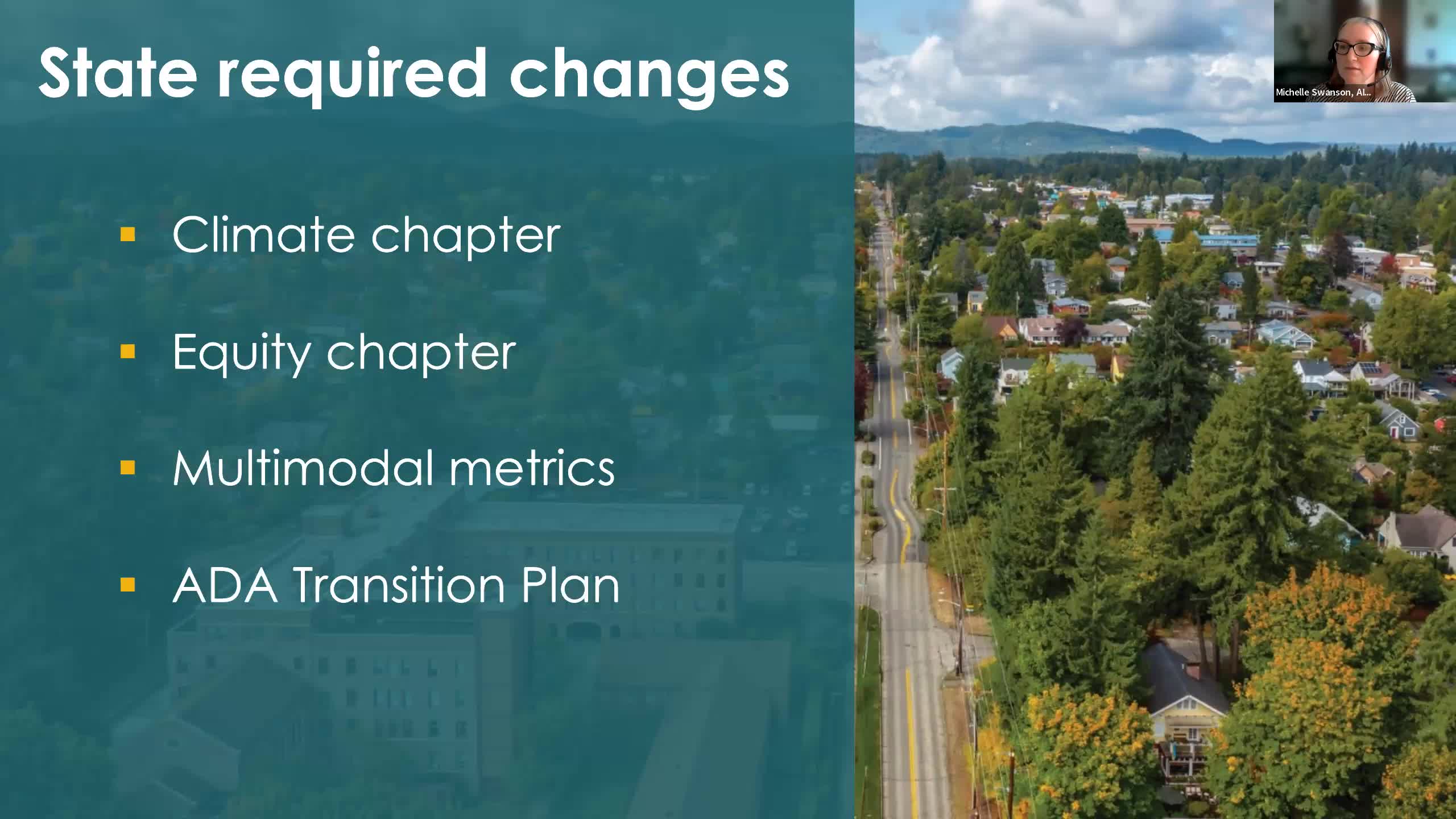City plans major overhaul for accessible transportation network
June 03, 2024 | Olympia, Thurston County, Washington

This article was created by AI summarizing key points discussed. AI makes mistakes, so for full details and context, please refer to the video of the full meeting. Please report any errors so we can fix them. Report an error »

In a recent government meeting, officials discussed significant updates to the city's transportation policies, emphasizing the importance of accessibility and connectivity in urban planning. The conversation highlighted the necessity of ensuring that city facilities, such as City Hall and the Olympia Center, are accessible to all residents, aligning with the requirements of the Americans with Disabilities Act (ADA).
One of the key proposals involves revising the language surrounding street connections in the city's comprehensive plan. Officials stressed that a well-connected street grid is essential for promoting walking, biking, and public transit use, which in turn supports the city’s goals of reducing greenhouse gas emissions and vehicle miles traveled. While no immediate changes to planned street connections were proposed, a future study will assess where additional connections may be needed.
The meeting also addressed the engineering design and development standards (EDDS) that mandate sidewalks on both sides of streets, along with enhanced bike lanes on major thoroughfares. These standards aim to create a safer and more accommodating environment for pedestrians and cyclists. Officials acknowledged the historical context of existing infrastructure, noting that many streets were designed under outdated policies that did not prioritize multimodal transportation.
Feedback from the Bicycle and Pedestrian Advisory Committee was noted as a vital component of the ongoing discussions, indicating a community interest in developing pedestrian and bike-focused connections that may not always include vehicle travel lanes. This approach aims to create a more human-scale urban environment, reducing traffic intensity on certain streets and enhancing overall safety for non-motorized users.
As the city moves forward with these proposals, the emphasis remains on fostering an inclusive and accessible transportation network that meets the needs of all residents.
One of the key proposals involves revising the language surrounding street connections in the city's comprehensive plan. Officials stressed that a well-connected street grid is essential for promoting walking, biking, and public transit use, which in turn supports the city’s goals of reducing greenhouse gas emissions and vehicle miles traveled. While no immediate changes to planned street connections were proposed, a future study will assess where additional connections may be needed.
The meeting also addressed the engineering design and development standards (EDDS) that mandate sidewalks on both sides of streets, along with enhanced bike lanes on major thoroughfares. These standards aim to create a safer and more accommodating environment for pedestrians and cyclists. Officials acknowledged the historical context of existing infrastructure, noting that many streets were designed under outdated policies that did not prioritize multimodal transportation.
Feedback from the Bicycle and Pedestrian Advisory Committee was noted as a vital component of the ongoing discussions, indicating a community interest in developing pedestrian and bike-focused connections that may not always include vehicle travel lanes. This approach aims to create a more human-scale urban environment, reducing traffic intensity on certain streets and enhancing overall safety for non-motorized users.
As the city moves forward with these proposals, the emphasis remains on fostering an inclusive and accessible transportation network that meets the needs of all residents.
View full meeting
This article is based on a recent meeting—watch the full video and explore the complete transcript for deeper insights into the discussion.
View full meeting
